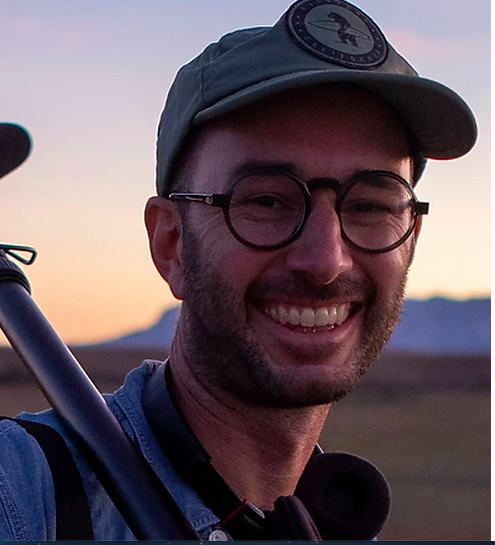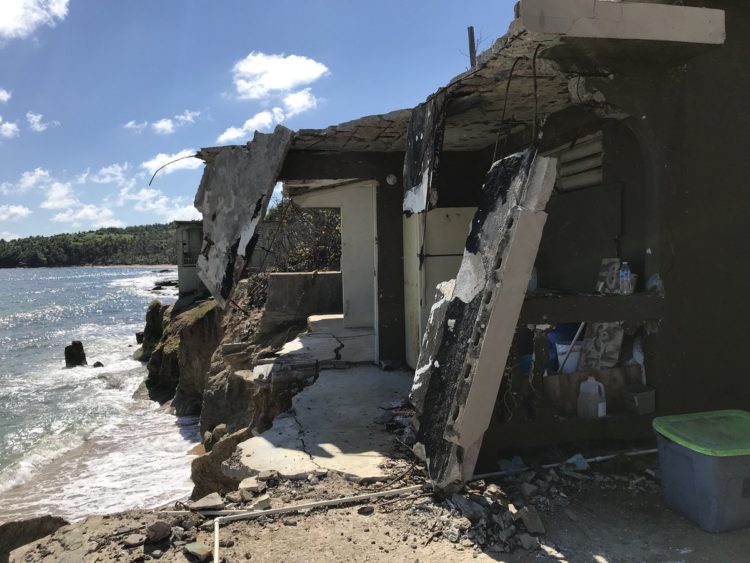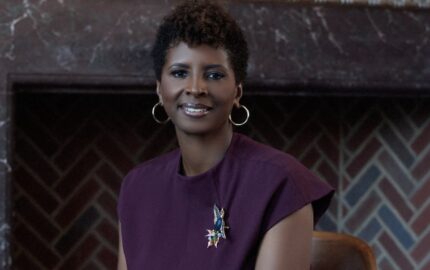“Some things about the world, if you look them straight in the eye, are truly unsettling. There is a time and place to ask people to look at that.”
John D. Sutter is a journalist and documentary filmmaker who has worked at CNN since 2009, and who is now producing a series of films about climate change called Baseline. On September 20th 2017, Hurricane Maria hit Puerto Rico as a Category 4 storm, ultimately killing almost 3,000 people. Sutter spent more than a year reporting on the consequences. Our conversations explored his experiences and journalistic processes. Among the pieces he referenced were “La Ruta De María: A journey along the path of the hurricane” and “We surveyed 112 Puerto Rican funeral homes to check the accuracy of the hurricane death toll. This is what we found.”
As told to Richard Forbes
I remember watching the weather radar, sick to my stomach, as Hurricane Maria intensified and then hit Puerto Rico. I was looking around to see if I could be helpful, and I was fishing around for what was going on in the aftermath of this storm. I ended up getting a tip that water from a toxic waste site was being distributed, because everyone was so desperate for drinking water.

So I went down to tell that story. I didn’t live in Puerto Rico full-time, but I was going back and forth consistently for more than a year, spending five days to several weeks at a time.
I was doing investigative and narrative reporting with CNN. I speak some Spanish, but not enough to work on my own, so it would be me and Cristian Arroyo-Santiago, a local newspaper reporter who got laid off after the storm, who was interpreting for me.
If we were making a video, it would be me, a video producer and Cristian. Otherwise, it was just me and Cristian.
One of my ideas was to try to tell the storm in a cross-section. Trying to encompass everything that happened to three million people — it’s just too much. The route of the eye of the hurricane is one way to tell that; it gives you a narrative background.
I do a lot of “wander reporting” and knocking on doors, so Cristian and I would go looking for cases that had been described to us. We would just go somewhere, and we’d talk to a fruit vendor, who sent us to a hair salon, who sent us to a priest, who sent us to this neighborhood, and we’d find a family to talk to. And sometimes, you see a situation that’s intense and stop and see if anyone wants to talk.
Interviewing traumatized people
“We’re journalists from CNN. I’m really sorry to interrupt you, but do you have a few minutes to talk?”
When I’m talking to someone about something that can be really traumatizing, I think a lot about consent. Have you gotten consent? And there are multiple layers of consent. Do you want to tell that story? Do you want to tell that story on camera? How long are we going to sit together? Do you want to do it in installments or right now? This could be seen by X million people. Even if no one really knows what that will feel like, I try to give people information so they can consent knowingly.
Related stories
Story Craft: Editor and teacher Jan Winburn’s sensitive guide to covering victims of trauma
Strictly Q&A: Jessica Ravitz on a farm suicides and one family’s grief
Strictly Q&A: Moni Basu on following an earthquake survivor in Haiti
And there are a lot of considerations about visual mediums. What you show and don’t show can have a big emotional impact. The first investigative piece I did on the uncounted deaths after the storm, we followed a guy into a morgue where he worked. He just went there, and we kept shooting it. And then we had a lot of conversations about how and if to use it. Why are we showing this? Do we blur parts of it? Shock value isn’t a good reason to me, but in this case, it reflected the intensity of his experience. So we used it.
Challenging the official account
This was the time that the Trump administration was making a really big deal about how few people died in the storm. And it was kind of “thou doth protest too much,” because you heard a lot of stories about people dying and about hospital morgues being overwhelmed. So we were surveying funeral homes to see how many people were actually dying. And it partly came down to the way the CDC defines a hurricane death.
The person in the lead of that story was the last person I talked to. In the evening, I went to a house, and they were praying the rosary for Quintin, whose power had been out for weeks, and who had been using candles to illuminate his house. He died in a house fire. That is an indirect hurricane death, and should be officially connected. He wouldn’t have been using those candles otherwise. This wouldn’t have happened if the storm hadn’t hit.
I remember so much about him from interviewing his relatives. He went all around town in his white pickup truck and his cowboy hat fixing everyone’s homes, and he would only build out of cement and never wood because he didn’t want them to get destroyed in a hurricane.
To me, it’s things like that that make these stories worth reading. He was a whole person whose life extended well before this. Sometimes I hear people doing interviews with people who are “victims” and it’s like they’re getting slotted into a formula. I get really frustrated when I see that. There’s no attempt to get to know them and their humanity and what they were about. I don’t want to flatten people in that way. Quintin died in that fire, but it’s not his full life. It’s not what matters to everyone who knew him. I try to ask that: How do you want him to be remembered? What do you want us to know about him?
The toll of reporting on the reporter
The reporting was really hard on me. I was doing all this work, and there was a lot known about how bad it was and nothing was changing. I think I produce my best work when I’m emotionally moved and I think I’m pretty good at holding it together. But there were definitely a couple stories where I drafted the thing literally overnight, then was on the phone in the morning reviewing it. That was when I would feel it.
It helped that I could leave. That helped get a bit of emotional distance. But I would be seeing friends in Atlanta, and people would be like “What are you doing down there?” I get that reaction; not everyone’s job was to focus on the plight of Puerto Rico in the aftermath of Maria.
Around the six- to nine-months mark, it started to get to me. I felt like all this stuff wasn’t being heard or taken seriously and it felt wildly unfair. It felt hard for me to picture waiting that long for help in Florida. Puerto Rico is a territory of the United States. People there have citizenship. And it was in such dire straits. It felt unfair, if not racist.
That was the period when I sought out a therapist, because I just felt hopeless about the situation. And I knew that wouldn’t serve the people I was writing about. The therapist helped give me some tools to take care of myself in the field.
For a year, I sort of lived in the Marriott in a fancy part of San Juan. They sometimes had power and internet. I was on the 17th floor, and there were glow sticks scattered in the stairwell so you could see your way up when the power cut out. This was a minor inconvenience compared to what other people were going through.
It’s one thing if you’re in a place for a week, sprinting, working constantly, writing overnight, not eating well, not sleeping, whatever. But if you’re doing that for six weeks and you haven’t left — I was crashing. I had to pace my reporting, go on a run, be a human who is healthy and sleeps. It’s weird — that felt selfish to me — but I got to the point where I had to start doing things right for myself. Otherwise I wasn’t at my best.
Telling the hard truths
I’m not a sugar-coater. There were people who read some of the stuff I wrote in Puerto Rico and said this is too much. I realized that some of the drafts I was sending in were coming from a place of despair. But that was true to how everyone around me was feeling. If anything, it was far worse among people who were stuck in it all the time. I thought people needed to hear that. I didn’t want to make it easier. I think there is hope, but it’s a tough situation and we’re not doing enough.
I don’t believe in injecting tidy endings or happiness into stories to make people feel better. Some things about the world, if you look them straight in the eye, are truly unsettling. There is a time and place to ask people to look at that, to interact with it, and to try to make peace with it or change it or whatever their response is. Solutions are out there, but I don’t like the insinuation that we don’t need to know the reality of what is happening.
Telling the universal story through metaphor
I tend to think in symbolism and metaphor and I know those moments when I see them. I think that’s a film/writing crossover. In film, if you’re good, those images are standing in for something else. And they make you think, based on how they’re shot. I’m looking for that in storytelling. People are smart. I like to find ways to say things without knocking them over the head.
I ended one story at the place where the eye of the storm left the island. There was a conversation about it with my editor. This was the literal end of this journey and there were these fishermen. They aren’t the most impacted people. For an investigative editor, that’s not the strongest ending. But it was metaphorically significant to me. They were continuing to cast their lines, casting into the unknown, not knowing what’s next.
***
Richard Forbes is a graduate student at the University of Montana School of Journalism with a focus on photo and video journalism and experience as a backcountry guide.



